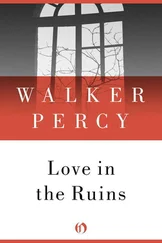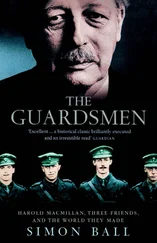Duncan continued to collect for Banks and managed to get two more specimens of the Yu lan . These he sent with John Kincaid, a surgeon with the East India Company at Madras, who was returning home as a passenger via Canton.[32] When, at the end of June 1788, Kincaid was safely back in London, he had to tell Banks the sad news that the two plants had not survived the voyage; but that two fans, which Duncan was sending as presents to Dorothea and Sarah Sophia Banks, were as good as new.[33]
John Duncan’s health was deteriorating and on 14 January 1788, less than a month after sending his final consignment to Banks with Kincaid, he was granted sick leave to return to London.[34] By then, Alexander Duncan, his younger brother, was already in Canton having been given permission to leave Calcutta, where he was serving in the East India Company’s medical establishment, to visit his ailing brother. Alexander immediately completed his brother’s outstanding consignment of more Yu lan s, and promised to fulfil the remaining instructions.[35]
John Duncan was back in London several months later and contacted Banks at the earliest opportunity. He told him about his having had to leave Canton and that his brother, Alexander, was now acting as the factory’s surgeon, the supercargoes there having insisted that he stay on. Banks agreed to use his influence with the East India Company to make Alexander’s position a permanent one. Banks wrote to Thomas Morton, the Secretary to the Court of Directors of the East India Company, asking him ‘to confer a favor of no small matter’.[36] This was not how appointments were normally made – the medical service in Calcutta decided on who would be the surgeon at Canton – but though the process was delayed, in the end, John Duncan and Joseph Banks got their way and Alexander Duncan got the appointment.[37]
Duncan started collecting directly for Banks in late 1788 and continued to do so for about eight years. In his very first letter to Banks, dated 6 December 1788, Duncan proudly told Banks that he had more Yu lan s – the last ones he had sent he was sure would not have made it – and seeds of the red and white water lily. All of the specimens were in good shape but to give them the best chance of surviving the voyage back he entrusted the consignments to two passengers, one of them probably Henry Lane, a supercargo, who was returning to London on the Talbot ; and another, a Mr Turnly who was to be on the Minerva . Duncan was taking the precaution of spreading the risk and enhancing the chances of survival by trusting passengers to care for the plants, and using two different ships. In all of his attention to plants, Duncan did not forget a present – a ‘Box of Souchon, called here Powchong Tea’ – for Lady Banks.[38]
When he read the letter, Banks might well have concluded that Alexander Duncan was going to be more enterprising in collecting plants than his brother had been. He and another ‘Gentleman’ (a Mr Mieron), Duncan told Banks, had already ‘engaged a Chinese’ to bring him specimens of the much-sought-after lacquer tree from the interior. Banks would have been right in his assessment. In the next trading season, Banks learned that Duncan had befriended Consequa, one of the Hong merchants and a nephew of Puankhequa I, and had discussed aspects of Chinese botany with him.[39] Like many other Hong merchants, Consequa had a garden in Henan (Honam), the island on the other side of the Pearl River from the East India Company factories, but Consequa’s would become one of the most elaborate in Canton.[40] With his connections both inside and outside Canton, Consequa would be the vital and desperately sought-for link to the Chinese countryside.
In all his dealings with John Duncan, Banks, though grateful for what he had collected and sent, must have been frustrated that he could not convey specific requests to him. Duncan had already excused himself for not knowing much botany and therefore would not have been able to identify any particular plant Banks might have wanted. It is for this reason that Duncan’s consignments consisted of the easily obtainable magnolia, peony and water lily. Banks had a very clear idea of the kind of plants he wanted from China – those that were not already growing in Kew or anywhere else in England.
Even though Alexander Duncan was no better at botany than his brother, this ceased to matter so much because by the end of 1789 he had received from Banks a remarkable quarto, ‘The Book of Chinese Plants’.[41]
The person responsible for it was Banks’s old friend James Lind, with whom he had last travelled to Iceland in 1772 and who was now physician-in-ordinary to the royal household in Windsor.[42] Lind, like many medically trained men of the time, practised his profession on East India Company ships and, beginning in 1766, he went to Canton. He was back in Canton in late 1779 or early 1780.[43] By then, apparently, he had learned enough Chinese to able to write characters and to translate some words.[44] He also collected Chinese books.[45]
In 1789, Lind was visiting Soho Square and at some point began work on an extraordinary project, what he called ‘A Catalogue of such Chinese and Japonese [sic] plants whose Chinese characters are known and are botanically described’ and ‘to shew which of them have been introduced into His Majesty’s botanic Garden at Kew’.[46]
Lind had worked out that he could cross-reference the Chinese plants mentioned in Kaempfer’s Amœnitatum exoticarum and in the Bencao gangmu , China’s most important compendium of materia medica (Banks owned a copy), with the Chinese drawings in his library (probably those that came from John Bradby Blake) and the Chinese plants actually growing in Kew, which he would know thanks to William Aiton’s newly published Hortus Kewensis .[47] The result of this exercise was an inventory of precisely those plants that were not growing in Kew and for which Lind, with the help of his sources, could supply Chinese characters and possibly even a drawing. Lind could identify around one hundred and fifty plants that fell into this category.
‘The Book of Chinese Plants’ that Duncan received from Banks in late 1789 was compiled from Lind’s inventory. Each page had a coloured illustration of a Chinese plant that was not then growing in England together with its Chinese characters. In the corner of each page there were several crosses added to convey how much Banks wanted an individual plant: four, the highest number, signified that the plant was unknown in the West and was a must: one, the lowest number, signified that the plant was known but had never been seen in its living state.[48] The purpose of the Book was to make plant collecting in Canton more focused and efficient. It took the guesswork out of collecting and did not require the collector to know Chinese: the plant’s Chinese name could be shown to its provider for identification; and the illustration would be used for verification.
Duncan immediately put the Book to work. The characters were not always accurate, but the drawings made all the difference.[49] In his next couple of letters to Banks, Duncan prided himself on getting seventeen plants, which appeared in the Book, including the Chinese flat peach.[50]
It didn’t matter now that Duncan did not know Linnaean nomenclature because this book dispensed with it. Once he had a specimen, he simply described it in a letter, using Banks’s own words, and then referred to it by its romanised Chinese name and its corresponding Chinese characters, which were inserted into the letter by someone who could write Chinese. One such plant, which Duncan called Tsu-lung-tsow and which he described as having ‘Leaves in form of Tancard with a lid’, was the pitcher plant, Nepenthes mirabilis .[51] Duncan entrusted it to the ship’s commander Captain Brodie Hepworth, who had previously brought Banks botanical specimens from China and whom he recommended as someone who cared for plants. Duncan told Hepworth that even though it might look to him as though the plant was dead on arrival, it could be pruned and might revive. The plant survived the voyage and was one of the first carnivorous plants to grow at Kew.[52]
Читать дальше












